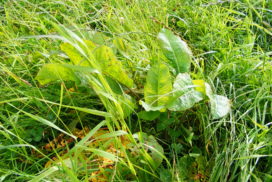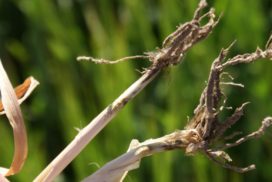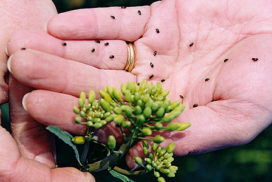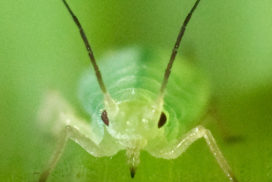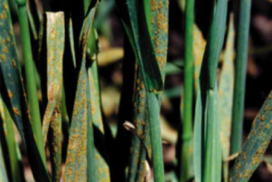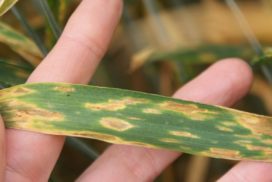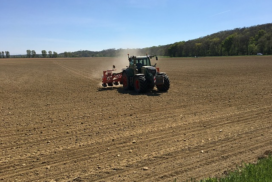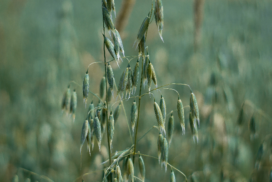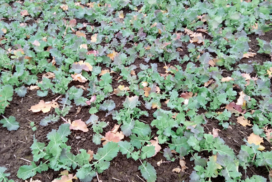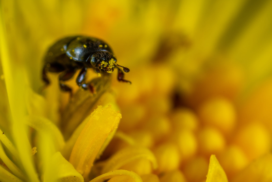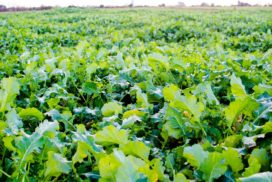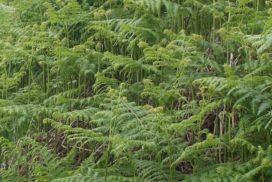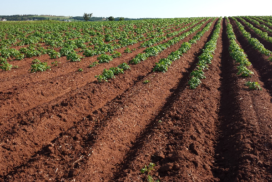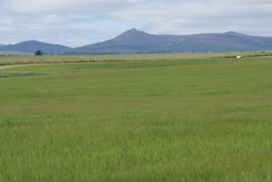Crop Health Updates - April 2020
General Comments
We hope you and yours are safe and well in the current crisis. Food production has seldom seemed more important and as primary producers in the all-important food supply chain, farmers and their agronomists are working hard to secure this year’s crop. There is a lot of sensible social distancing going on and a realization that for many farms with only a few key workers there is a lot at stake if someone gets ill or has to self- isolate.
A period of dry weather and sunshine has let field work carry on at speed and so far, our winter crops are not suffering the same overly dry conditions that are common in the south. What is evident is the huge range in growth stages between sites, drilling dates and varieties, so the messages about walking crops and reacting to what is seen have seldom been more relevant. We could do with a bit of rain though to give crops a drink and to allow any fertilizer lying on the soil surface a chance to get down to the roots.
Note that we are still experiencing cool temperatures at night, and this can stress crops making them susceptible to spray scorch from complex tank-mixes of nutrients, fungicides, herbicides and PGRs which can be ‘hot’ for the crop.
The warmer weather is kick-starting some pest activity, with pollen beetles numerous in oilseed rape and some aphids starting to fly around, so checking crops regularly for pests as well as disease should be a regular activity.
Weeds
Residuals that weren’t applied in the autumn can be applied in early spring, but generally not beyond the end of March, and weeds needed to be very small. So, we now need to focus on post-emergence treatments. As we move into April with temperatures rising slowly, the spring post-emergence treatment options can control larger weeds, but there are limitations on which crops they can be used in. Read more here.
Wheat diseases: Eyespot
A mild winter suits eyespot so the risk is potentially greater this year. Sow date is actually quite a small influence, so the proportion of late drilled crop only reduces the risk slightly. Base your need to treat on your previous experience of the disease, and on the risk assessment which is shown below. Wetter sites with a high preponderance of cereals in the rotation are at greater risk. Where the risk is high there is an additional rationale for using an SDHI at the T1 timing. Read more here.
Oilseed rape: Pollen beetle risk
There is a risk from pollen beetle damage to the buds, giving rise to blind-stalks with no flowers or pods forming on them. A warm spell when temperatures reach 15°C will trigger a mass pollen beetle flight into crops. When beetles appear in crops, note that there are updated thresholds for treatment. The plant density needs to be taken into account to estimate the threat from pollen beetles at green-yellow bud. Read more here.
Aphid risk for winter cereals
Look for aphids on leaves on warm sunny days and consider an aphicide if aphid colonies can be found on 50% of plants. Aphids are probably not going to start flying into crops until late April or early May, but when we have a warm sunny day that is not too windy aphid flights may occur. Read more here.
New restrictions on epoxiconazole
There are new restrictions on the use of epoxiconazole as this azole has dropped at unexpected speed into a final use up period. Authorisations for sale and supply end on 31 October 2020 and authorisations for disposal, storage and use end on 31 October 2021. Read more here.
Winter wheat - Septoria monitoring and control
For most crops, the T1 timing is still a week or more away. The real pattern for this year is that there is no pattern – crops are very variable depending on sow date, variety and site conditions, and disease levels and growth stages are variable. Many crops are sitting shorter than usual so the height of the internode might not be a good indicator of that actual leaf layer emerging. Ideally, peel back leaves and count in from the emerging leaf to check. Walking crops and keeping programmes tailored to the field in question is particularly key this year. Read more here.
Spring Barley - disease control
Drilling has really leapt on in the dry weather and some areas are all but finished. Hopefully, there is enough residual moisture in soils to get germination and brairding quickly. In contrast to the winter crop where the responsive fungicide timing is T1, in spring crops the balance is less weighted to that early spray and with more resistant varieties now in play there is scope to trim T1 inputs which in the spring crop are aimed at late tillering to GS30. Read more here.
Spring Barley - Weed control
It is important to keep on top of weeds within establishing spring barley. Annual meadow-grass and wild oats can be common problems. Read our guidance here.
Winter oilseed rape - sclerotinia monitoring
Sclerotinia risk is low as spores have yet to be detected, plus humidity and temperature criteria risks are still low – they have only exceeded the 21-hour threshold in Wick and Kirkwall so far. Read more here.
Winter oilseed rape - pest monitoring and control
The few days of warm sunny weather has triggered a large migration of pollen beetle into winter oilseed rape crops, with counts exceeding 20 beetles per plant being reported. Crops still at green-yellow bud are at risk from pollen beetle damage to the buds, giving rise to blind-stalks with no flowers or pods forming on them. Any further warm spells when temperatures reach 15°C will trigger further pollen beetle flights into crops. Note that crops in flower will not be damaged by pollen beetle as they can easily access the pollen they crave. Read more here.
Weed Control in transplanted brassicas (sprouts, calabrese, cauliflower)
These can be relatively slow to come away, increasing the potential for weed competition if weed control programmes are inadequate. There are on-label recommendations in brussels sprouts, calabrese and cauliflower for a number of products. The following species are NOT controlled: fumitory, hemp (day)-nettle, pennycress, field pansy, knotgrass, fat hen, small nettle, redshank, and corn spurrey are poorly controlled. Read more here.
Bracken Control 2020
Emergency authorisation of Asulam for bracken control this summer has been confirmed by CRD with applications permitted from 1 July 2020. However, authorisation is by helicopter only with a 90m aquatic buffer zone. The bracken control group submitted an additional application on 7 April for a buffer zone of 50m, and for ground-based application. For more information see the Bracken Control Group website.
Virus management in seed potatoes
The virus health of Scottish seed potatoes is a unique selling point in GB and around the world. However, the amount of virus in crops did increase significantly during 2019 to its highest level for some decades. After an exceptionally mild winter disease pressure in 2020 is going to be high. The opportunity exists for growers and the industry to bear down on the disease in 2020 to reduce virus levels not just for 2020 but into the following seasons. Read more here.
Planning for crops without the use of chlorothalonil
The final use up date for the multisite fungicide chlorothalonil is the 20th May after which point is can neither be used or stored. The best way to use up existing stocks where they exist is in the manner intended, so the early sprays on wheat and barley will be a key use up period where its inclusion will help manage existing disease risks. Read more here.
Sign up to the FAS newsletter
Receive updates on news, events and publications from Scotland’s Farm Advisory Service

